27 April 2022
Originally published
15 December 2020
Source
Europe’s renewable-energy revolution declared its arrival on Kamena Gora, a remote mountain in south-western Serbia, with a bang and a landslide. For this report Dina Ðorđević revealed for Reporting Democracy respectivly BIRN how a campaign to build renewable energy plants, supported by the EU, siphoned away subsidies and wrecked pristine waterways in Serbia and beyond.
In July 2015, workers building a small hydropower plant carved a road across the mountain and blew up a large rock within a nature reserve. They had already cut down protected trees, causing a landslide, and they would go on to lay a pipeline in the ground, channeling the waters of a mountain stream to their new plant, a turbine housed inside a small building.
The people who lived on the slopes of Kamena Gora were appalled. For generations they had relied on the stream to irrigate their fields. The small hydropower plant had diverted the flow, threatening their livelihoods. It had also made a mockery of the government’s decision, announced just the previous year, to list the mountain as a nature reserve.
In Gracanica, a village of some 200 residents, councillor Nehro Rovcanin began receiving complaints about the new project. “No one should have been allowed to build in such a beautiful part of the country,” he told the Balkan Investigative Reporting Network, BIRN. “It violates the environment and it goes against the interests of the people.”
Rovcanin called the police and managed to halt the construction – but not for long. Within days, the work had resumed. The plant’s owners were missing an important document, an environmental impact report, but this did not get in the way of their plans.
The plant was inaugurated in 2016, in the same year that its owner, construction magnate Branislav “Gugi” Savić, was jailed in neighbouring Montenegro for his role in a multi-million euro real-estate scandal. The so-called “Budva affair” is better known for ending the political career of Svetozar Marović, the last president of the rump state of Yugoslavia who had until then been the second-most powerful man in Montenegro.
A small hydropower plant might seem like a humble investment for a wealthy, well-connected businessman with a casual attitude to the law. Yet Savić was not the only such figure to have been converted to the cause of renewable energy in Serbia. To the east of the country near the Bulgarian border, the land and construction permit for a small hydropower plant were acquired by a company linked to Ljubiša Buha “Čume”, a prominent Belgrade gangster best known for testifying against underworld associates implicated in the assassination of the former Serbian Prime Minister, Zoran Ðinđić. According to the Belgrade-based investigative outlet, CINS, key permits for the same plant were sold on to a company linked to Miloš Pandrc, a convicted cocaine trafficker and former associate of the drugs baron, Darko Šarić, who is currently serving time in Serbia on smuggling and money-laundering charges.
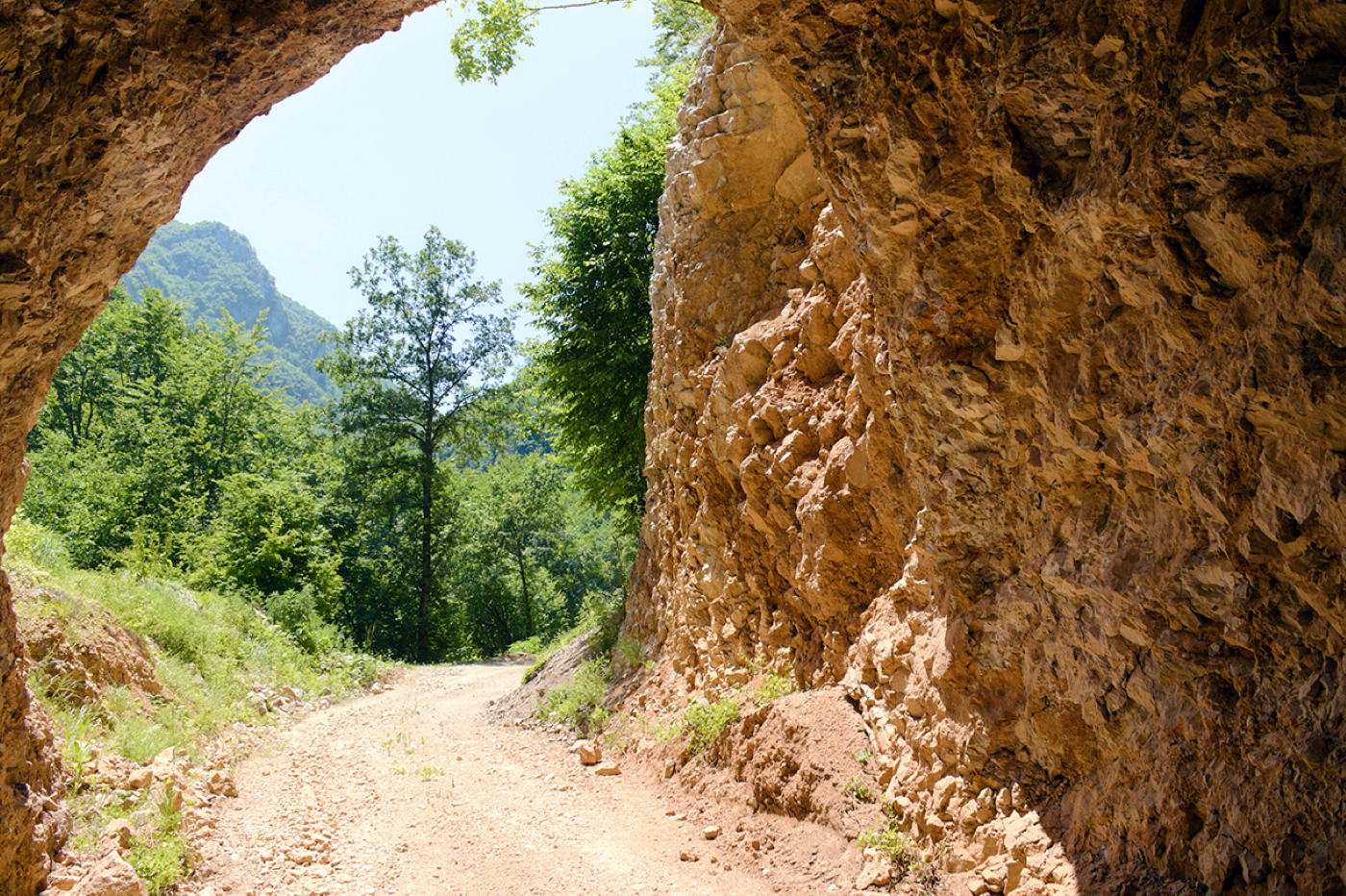
The mountains around Kamena Gora were largely unspoilt until the construction of the small hydropower plant. Photo: Dina Ðorđević
Serbia’s small hydropower plants are part of a Balkans-wide construction spree. Over the last 20 years, hundreds of such plants have been built across the mountain streams and tributaries of the Danube basin, from Romania in the east to Albania in the west, and from North Macedonia in the south to Slovenia in the north.
The countries in the region are a mixture of new and aspiring EU members, and their embrace of small hydropower was endorsed by the bloc as it sought to encourage “green” alternatives to the coal-fired power stations that provide most of the region’s energy. Across south-eastern Europe, European banks offered credit for renewables projects, while national governments gave out generous subsidies to encourage private firms to invest in the sector.
Pipes, concrete and turbines were laid along pristine waterways, intruding upon national parks, nature reserves and the wilderness habitats of endangered indigenous species such as the Balkan lynx and the Danube salmon.
In many of these countries, however, the laws protecting the environment were weak or poorly enforced. The combination of state subsidies and lax regulation led to a small-hydropower boom in which the obligation to preserve nature was trampled in pursuit of profit. Much of the construction took place on remote mountainsides whose fast-flowing streams were deemed ideal for generating energy. Pipes, concrete and turbines were laid along pristine waterways, intruding upon national parks, nature reserves and the wilderness habitats of endangered indigenous species such as the Balkan lynx and the Danube salmon.
This investigation by BIRN reveals how an EU-backed pursuit of renewable energy in the Balkans ended up harming the environment in the name of saving the planet. Through the story of a single, small-hydropower project in Serbia, it shows how environmental checks that were a prerequisite for construction were frequently ignored, or carried out as an afterthought.
“There was a relatively clear legal framework regarding environmental protection, but this was bypassed as far as possible,” Goran Sekulić, a former deputy director at Serbia’s Institute for Nature Conservation, one of several government bodies that issued permits for the new plants, told BIRN. “The procedures were often avoided or abbreviated.”
Documents seen by BIRN show that at least 24 of the 116 small hydropower plants that were connected to Serbia’s national grid in 2019 – roughly one-fifth of the total – had been built without key environmental permits. However, these apparent violations have attracted little attention from Serbian authorities. Investigations were launched into only three of these 24 plants, on the suspicion that they had illegally obtained construction permits. All the investigations were concluded without any prosecutions.
Sekulić, who left the institute in 2015 and now works for the Worldwide Fund for Nature in Serbia, said that while a handful of plants had been built without legal permits, many more had damaged the environment despite having complied with the letter of the law. “We had some very harmful projects, in protected areas or other sensitive areas, that easily got permits,” he said.
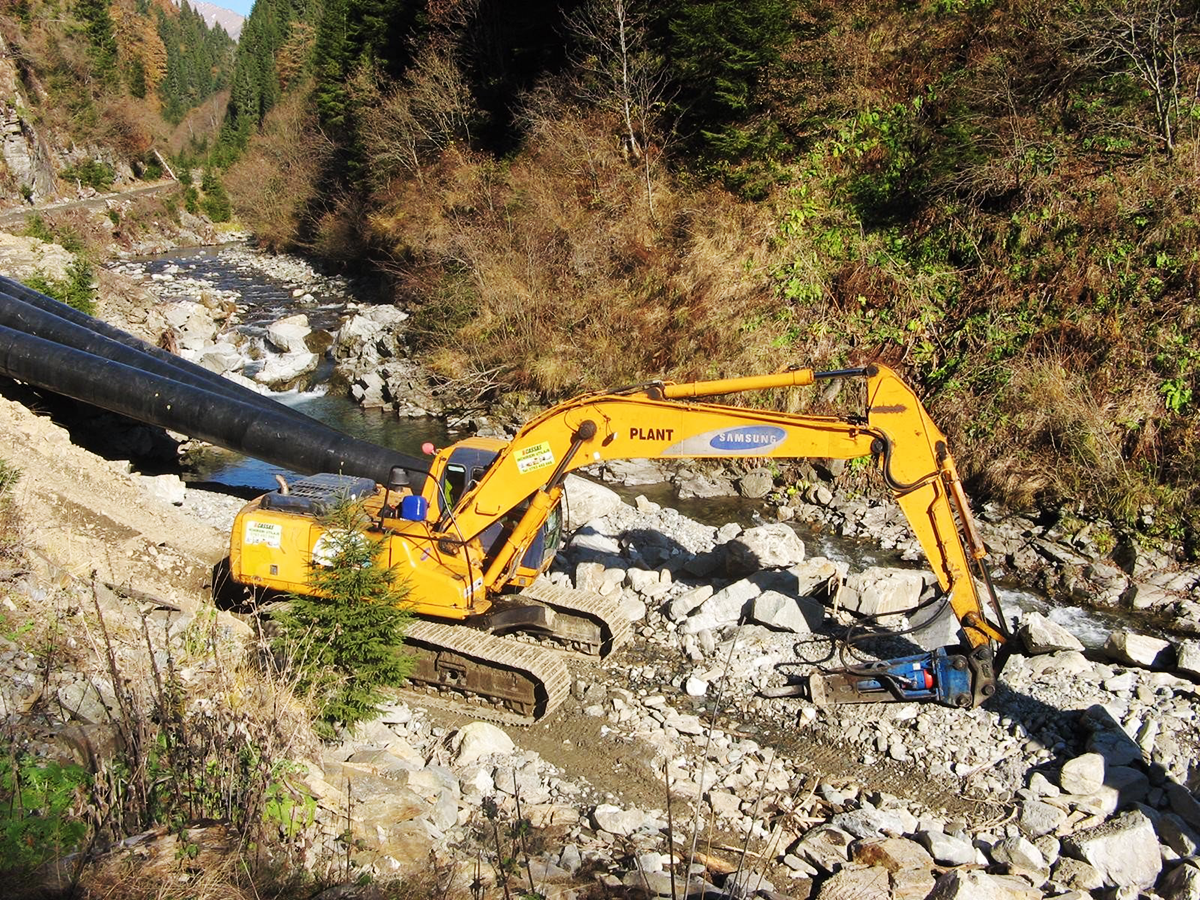
Heavy machinery was brought to remote mountain streams, such as this one in Romania, in order to build the plants. Photo: Ovidiu Mihut
Businessmen such as Branislav Savić are a minority among the investors in Serbia’s renewables sector, most of whom do not have criminal records. The presence of such figures in small hydropower is, more than anything, a sign of the powerful incentives that have underpinned the sector’s rapid growth, attracting a wide variety of commercial interests.
Investors in small hydropower were offered a type of subsidy known as a feed-in tariff, commonly used by governments to encourage small, private companies to build renewable energy plants. Under the terms of a typical such tariff, the state guarantees that it will buy the electricity produced by new plants at a generous, fixed price for a set period – which in Serbia’s case, was 12 years.
“There were huge economic drivers [behind the growth of small hydropower],” Sekulić told BIRN. “Decision-making [by state bodies] was primarily geared towards serving the financial interests of the investors… The environment could not cope with this.”
Over the last decade, the scale of the disruption from small hydropower has become apparent in Serbia and beyond. From across the region, familiar complaints have emerged, of dried-up streams and orchards, and of pristine mountainsides ruined by unsightly construction work.
Anger over the damage galvanised local environmental movements, bringing protesting farmers and village mayors onto the streets of capital cities. EU institutions also urged the region’s governments to withdraw their subsidies, while European banks tightened their rules for financing new plants.
The measures have had limited effect, with some countries in the region taking initial steps towards phasing out incentives for the construction of small hydropower plants. But progress has been slow and uncertain – both in countries that are members of the EU and in those that aspire to join it.
Regulatory framework
Energy markets are the cradle of the European project. Today’s 27-member EU grew out of the European Coal and Steel Community, a six-nation body forged in 1951 to regulate trade in the two resources deemed most essential for rebuilding the war-ravaged continent. The collective desire to secure energy supplies thus provided the spark for future integration.
“The focus on renewable energy is firstly about reducing the EU’s dependence on external supplies, as most renewable energy is produced locally.”
The EU is now the world’s third-largest consumer of energy, after China and the US. More than half its energy is imported, mostly in the form of oil and gas from Russia. The bloc’s pursuit of renewable energy is not just about mitigating climate change, according to Jakub M. Godzimirski, a research professor and expert in European energy policy at the Norwegian Institute of International Affairs. It is also driven by commercial and geopolitical concerns.
“The focus on renewable energy is firstly about reducing the EU’s dependence on external supplies, as most renewable energy is produced locally,” he told BIRN. “And it is additionally about making the EU more competitive globally. If the [renewables] market is competitive within the EU, then the EU will be better able to compete with actors operating in the global context.”
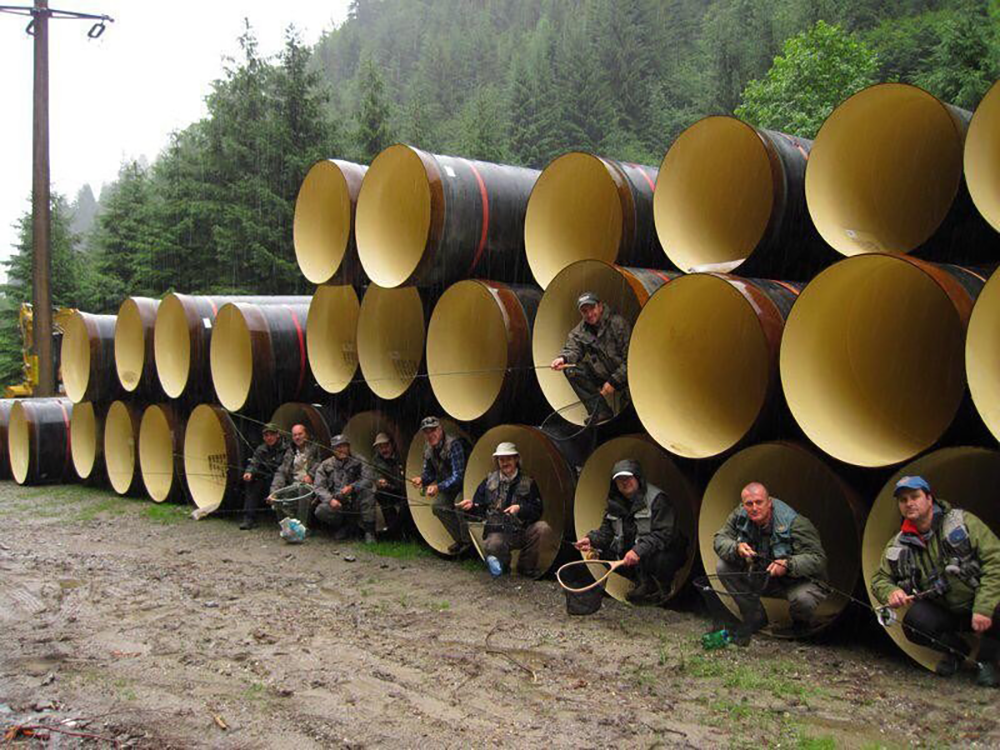
Anger over the small hydropower schemes mobilised protesters across the Balkans, including these fishermen in Romania. Photo: Ovidiu Mihut
As the world’s third-largest energy market, the EU can exert considerable influence over energy policy among its members and aspiring member states in the Balkans. With economic clout comes the ability to promote environmental regulations and market reforms, often aimed at reducing the dominance of state-owned monopolies.
The EU exerts this eastward influence through the Energy Community, an international body headquartered in Vienna. In 2006, Serbia joined six Balkan countries in ratifying a treaty with the Energy Community. The treaty committed the signatories to “complying with EU legislation on environment, investment, market behaviour and renewables” as a condition for access to “funding for energy projects from the EU and international financial institutions”.
The signatories agreed to adopt the Energy Community’s recommendations for increasing their share of electricity generated by renewables. And in Serbia as elsewhere, small hydropower was prioritised over wind and solar.
A typical small hydropower project consists of a large pipe on a riverbed, channelling water to a turbine downstream. Supporters of the technology argue that it is a more reliable source of energy than wind and solar plants, which depend heavily on the weather.
Godzimirski said small and large hydropower schemes were not intrinsically flawed – properly regulated, they could bring great benefits. “It’s about how the market is organised, it’s about the incentives you provide to investors,” he told BIRN. “And it’s about the ability of the regulatory framework to control things, [making sure they] are done in compliance with the rules.”
Deforestation damage
In 2014 and 2015, the facility at Kamena Gora – known officially as the Seoce Small Hydropower Plant – received inspectors from the Ministry of Environmental Protection, one of the many Serbian government agencies tasked with ensuring that the plants meet environmental standards. The inspectors found that some of the plant’s environmental permits were obsolete – they were issued in May 2012, well before Kamena Gora had been declared a nature reserve.
The plant’s owners were told to apply for fresh permits from another Serbian government agency, the Institute for Nature Conservation. Instead, they carried on building on the mountain. They did not seek approval for the construction of a rough gravel road, nor for felling trees within the nature reserve, nor for the destruction of a large rock to make way for the pipeline.
In July 2015, the ministry filed a lawsuit against the plant’s owners, accusing them of building the plant without the right papers. However, the owners never attended court and the case was eventually closed after the expiry of the statute of limitations in December 2017.
In the meantime, the plant’s owners applied to the Institute for Nature Conservation for the relevant permits and duly secured them, ensuring that the remainder of the construction could be completed lawfully. According to documents seen by BIRN from the Ministry of Environmental Protection, the owners also compensated the Serbian state for having damaged the forests, though the amount was not specified.
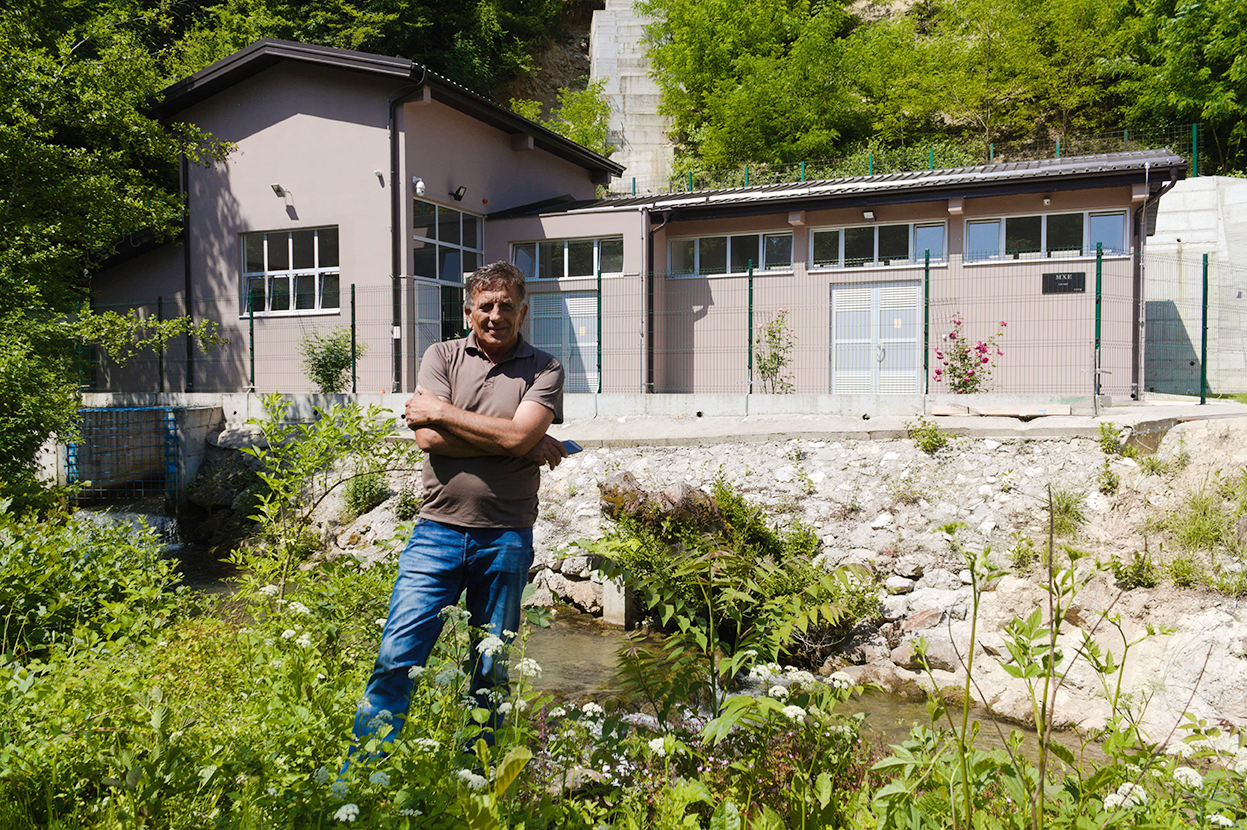
Nehro Rovcanin campaigned against the construction of the small hydropower plant on Kamena Gora, pictured behind him. Photo: Dina Ðorđević
“When the trees are chopped down, the land is also damaged,” Ratko Ristić, dean of the faculty of forestry at Belgrade University, told BIRN. Even in cases where fresh trees had been planted as replacement, he said, the forest eco-system could take from 60 to 100 years to recover.
Between May and August 2022, BIRN contacted the company that owns the Seoce plant, for a comment on three occasions [edited by Tipping Point]. On each occasion, company employees, speaking over the phone, said the owner, Branislav “Gugi” Savić, was the only person authorised to comment, and that he was not available.
The Seoce plant was one of 116 small hydropower plants that were feeding electricity to the Serbian national grid in 2019, the vast majority of which were built during the last decade. According to data compiled by BIRN from local authorities and the Institute for Nature Conservation, at least 24 plants were built without honouring key conditions to safeguard the environment, as required under Serbian law.
The owners of these plants began construction without conducting the environmental impact assessments that are typically meant to be provided in the planning stage. In the case of Seoce, the assessments were eventually completed, but only after construction had started. The environmental checks were treated as an afterthought rather than as the prerequisites required by law.
The responsibility for ensuring that the new plants meet environmental standards is shared between local authorities and several Serbian government agencies. In September 2019, Serbian President Aleksandar Vučić responded to pressure from environmental activists with a promise to create a separate body that would inspect standards at all the plants built within the last decade. However, one year on, there have been no further developments. In October 2020, BIRN contacted Vučić’s office for comment, but did not receive a response.
Janez Kopač, the director of the Energy Community Secretariat, emphasised that ultimate responsibility for protecting the environment lay with Serbia. “We can issue warnings, we can run misdemeanour proceedings,” he told BIRN, “but in the end, [the onus to act] is on Serbia itself.”
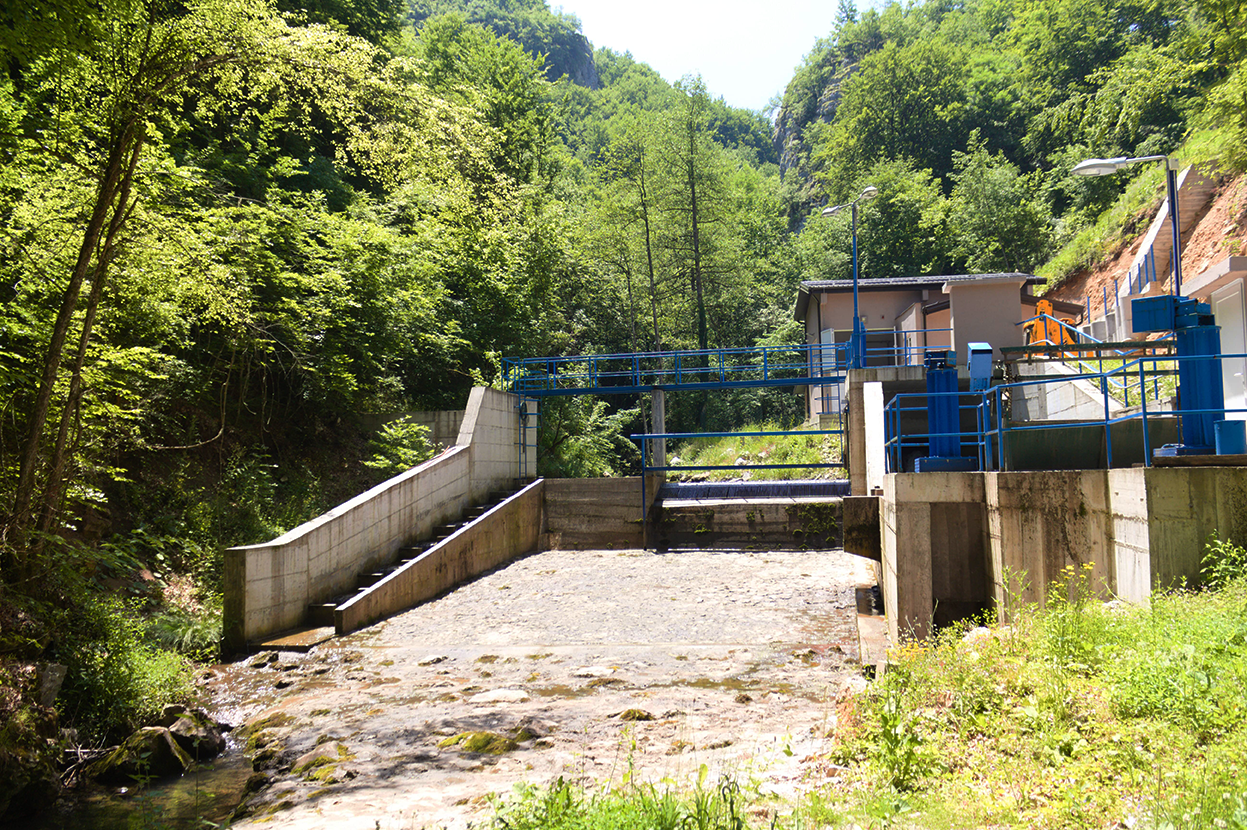
Villagers say the Seoce plant has altered the flow of the stream on Kamena Gora. Photo: Dina Ðorđević
The Balkans’ small hydropower boom has been aided by loans offered by European financial institutions looking to promote renewable energy in the region. Prominent funders in the sector include the European Investment Bank, EIB, and the European Bank for Reconstruction and Development, EBRD. Both these multilateral development banks have been tightening their rules for lending for small hydropower projects, demanding stricter environmental checks.
Commercial banks from across Europe have also helped finance small hydropower projects in the region. Among them is Erste Group, the Austrian bank whose foundation supports the Balkan Fellowship for Journalistic Excellence – the programme that paid for the reporting of this story.
In an emailed statement to BIRN, Erste’s Serbian branch said the bank was committed to fighting climate change by financing energy efficiency and renewable energy projects. The statement said the bank had not funded any small hydropower plants in protected areas, and had adopted “a risk matrix to take into account all social and environmental factors to ensure that funding was in line with international standards in the area”.
However, many environmentalists say European banks should altogether stop financing small hydropower projects. The Bankwatch Network, a regional coalition of environmental and human rights groups that has been campaigning against small hydropower, said it was “almost impossible” to monitor the plants effectively, in part because they were in such remote locations. “No amount of project assessment can stop operators drying up river beds,” Pippa Gallop, Southeast Europe Energy Advisor at Bankwatch, told BIRN in an emailed statement.
‘Gold-rush’ for licences
Following its agreement with the Energy Community, Serbia pledged that renewables would account for 27 per cent of its total energy usage by 2020. Recent estimates suggest this target will be missed. In fact, the share of renewable energy within Serbia’s total energy consumption has remained roughly stable since 2009.
“Much more could be achieved through energy efficiency measures to reduce demand, and much more electricity can be generated by appropriately sited wind and solar.”
In 2009, renewable sources provided 21 per cent of the energy consumed in Serbia. Meanwhile, a European Commission report from 2020 said renewable sources accounted for 20.3 per cent of Serbia’s energy consumption in 2018, the latest year for which data was available.
Moreover, much of this energy has come not from small hydropower but from an older renewables technology – large hydro-electric dams. Small hydropower accounted for only 0.7 per cent of the total energy produced in Serbia in 2018, according to data from the state-owned power utility, EPS, and the national statistical agency.
While the construction of any renewables plant has an environmental cost, this should be outweighed – in theory – by the benefits of generating electricity without burning fossil fuels. But environmentalists say that the trade-off has not worked for small hydropower in the Balkans, because the new plants have generated negligible amounts of electricity. “Much more could be achieved through energy efficiency measures to reduce demand, and much more electricity can be generated by appropriately sited wind and solar,” Pippa Gallop of the Bankwatch Network told BIRN.
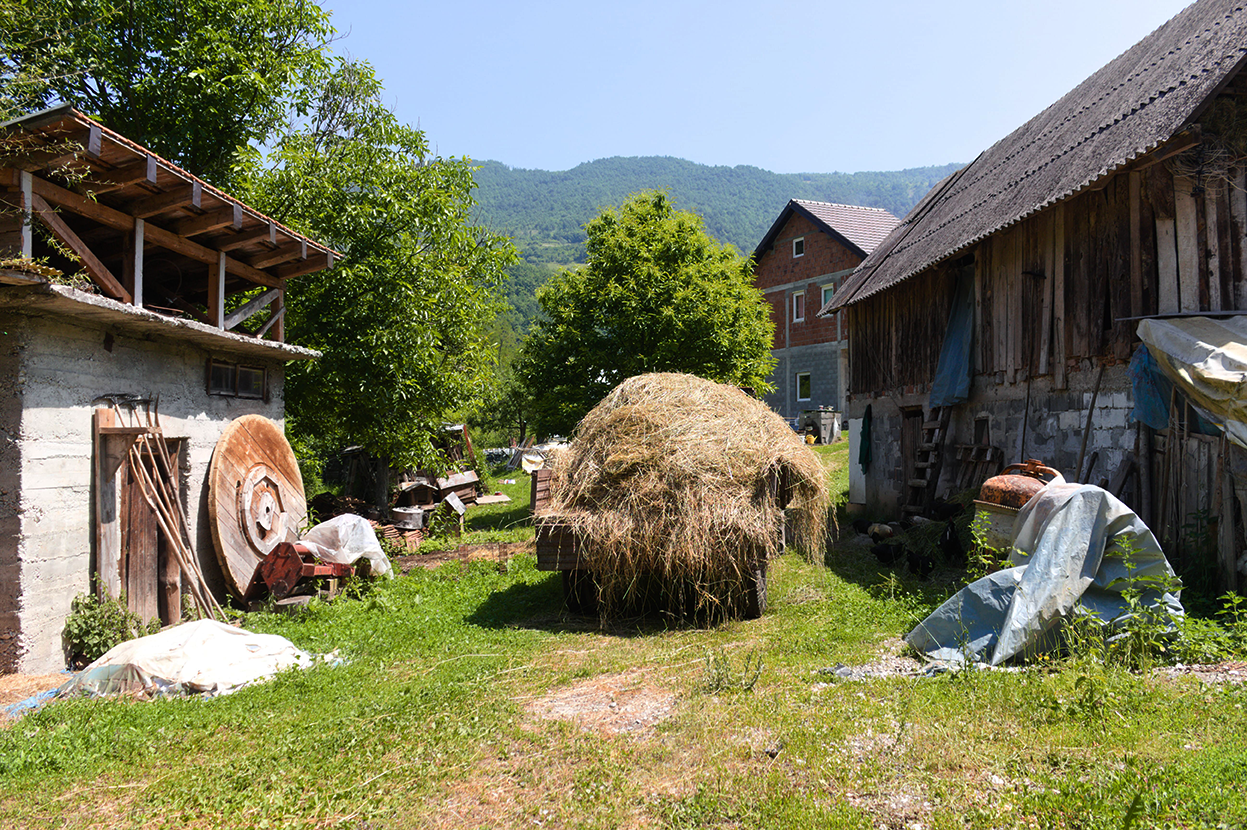
Gracanica is one of many rural communities in Serbia that has had to adjust to the impact of a small hydropower plant upstream. Photo: Dina Ðorđević
Despite being the centrepiece of Serbia’s renewables strategy, small hydropower has not produced anywhere near enough electricity to help meet the country’s pledge to the Energy Community. It has, however, generated healthy returns for those who invested in the sector.
Research by CINS, the Belgrade-based investigative news outlet, shows that Serbia paid out 105-million euros to small hydropower plants between 2013 and 2019. The cost has largely been borne by Serbian consumers, who pay a “renewables” surcharge on their electricity bills. The returns have meanwhile been passed on to investors through feed-in tariffs. According to Godzimirski, from the Norwegian Institute of International Affairs, the tariffs play a vital role in developing renewables capacity – they protect investors from fluctuations in energy prices.
“When you want to decide whether to invest in a small hydropower plant or a small wind power plant, you need to know that you will get a nice return on your investment,” he told BIRN. “Having a stable agreement with the national grid, which allows you to sell your energy at a certain price, makes your investment decision much easier.”
The guarantee of steady returns over a long period can make a renewables licence an object of speculation. A classified diplomatic cable from the US embassy in Belgrade alludes to a bustling trade in licences in 2009 – a time when Serbia was laying the foundations of the sector. The cable, released by the Wikileaks website, cites a conversation with officials from the European Bank for Reconstruction and Development, EBRD, which was helping to raise funds for renewables. The cable’s authors quote the bank’s representatives as cautioning that the renewables market “retained a gold-rush like quality, with many small investors… trying to gain licenses in the hopes of quickly selling these rights to other investors.”
The best-known case of corruption in EU-backed renewables schemes was unearthed in Sicily ten years ago, when prosecutors found that the local mafia had profited from the construction of wind and solar farms.
There is no evidence of corruption at the Seoce plant, or in the Serbian government’s overall management of the renewables sector. Elsewhere however, feed-in tariffs have been known to provide opportunities for corruption.
Godzimirski said the system was far from flawless and could create “an opening for corruption” in any poorly regulated environment where state officials were making decisions that affected the finances of private firms. He told BIRN that firms operating in the renewables sector could, for instance, be tempted to offer “economic incentives” to government officials to ensure that they received a particularly generous return on their investment, via the feed-in tariff.
The best-known case of corruption in EU-backed renewables schemes was unearthed in Sicily ten years ago, when prosecutors found that the local mafia had profited from the construction of wind and solar farms.
The director of the Energy Community Secretariat, Janez Kopač, also acknowledged an inherent risk of corruption in the system. “Wherever you have feed-in tariffs, the business can be taken over by a mafia,” he told BIRN. “As a direct contract with the state, it can be highly profitable.”
Kopač said such behaviour was usually confined to a minority of players within the renewables sector. “The state would end up bankrupt if it made similar deals with everybody,” he told BIRN. “Only firms that are close to the state can profit in this manner.”
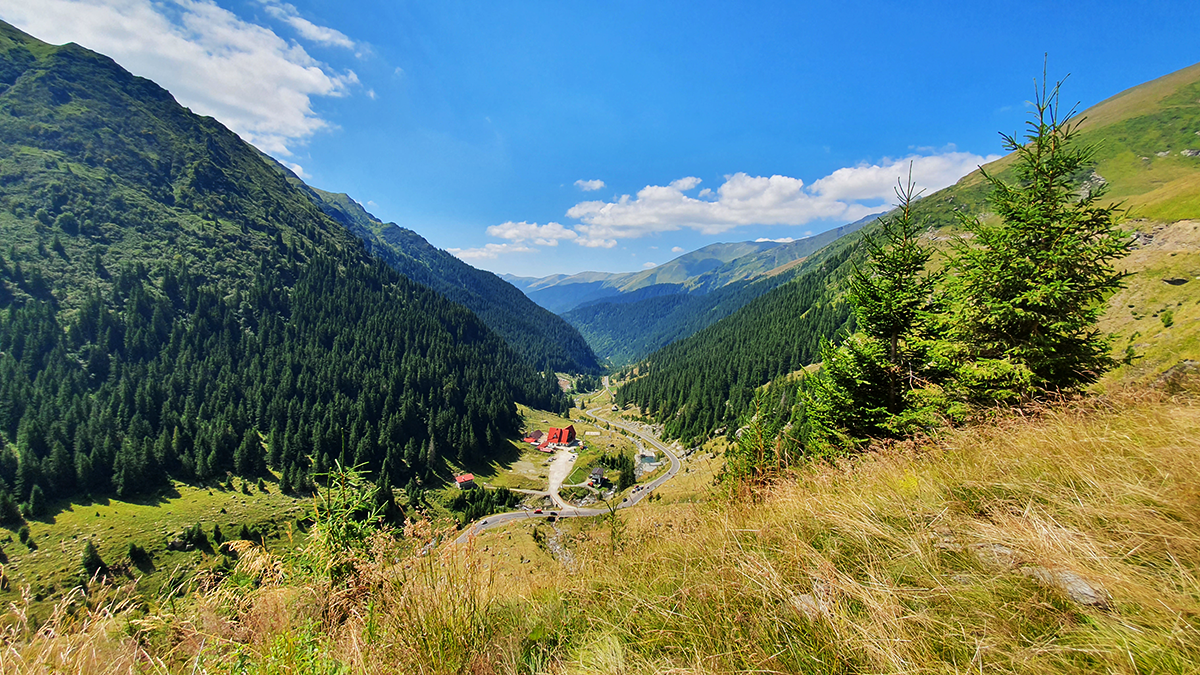
The stunning Făgăraş mountains in Romania are the site of several small hydropower projects. Photo: Dina Ðorđević
Kopač said feed-in tariffs “should be tolerated” only in exceptional situations, as a short-term incentive for private firms to build up renewables capacity. He told BIRN that the Energy Community advised governments to phase out the tariffs as swiftly as possible, replacing them with an auction system, whereby investors bid for the licences.
“These small hydropower plants are inefficient investments and the state encourages them [with feed-in tariffs],” he said. “Auctions would solve the problem overnight because there would be no more incentives for inefficient investments.”
However, Kopač said, his organisation had limited influence over national governments that disregarded its advice. “Thereotically it is possible [to expel a country from the Energy Community],” he told BIRN, but that would be “the nuclear option”.
Precarious gains
While Serbia continues to offer feed-in tariffs for small hydropower in defiance of EU guidelines, other governments in the region have yielded to environmental concerns.
An EU member since 2007, Romania embarked on a construction spree that led to the construction of hundreds of small hydropower plants in mountain wilderness areas. Some of these new plants were installed on the Buda and Capra rivers in the Făgăraş mountains, a branch of the Southern Carpathian range straddling central Romania.
The Făgăraş are a popular hiking destination, a home to species such as brown bears and lynx. A highway criss-crossing the mountains was described by the BBC’s Top Gear motoring show as “the best road in the world” on account of its stunning views and hairpin bends.
The Balkan small hydropower boom came to these mountains ten years ago, to a soundtrack of dynamite and heavy machinery. Ovidiu Mihut, a local schoolteacher who used to fish in the Capra, recalls his first encounter with workers and bulldozers laying pipes across the riverbed in 2010. “It was revolting,” he told BIRN, on a trip to the area. “The river is part of my heart… It was like seeing someone whom you knew was about to die.”
Enraged, Mihut turned to undercover activism. At local bars, he met the workers building the small hydropower plants and heard their stories, never letting on that he was gathering information. To keep sober while they drank, he discreetly refilled his glass with iced tea instead of beer.
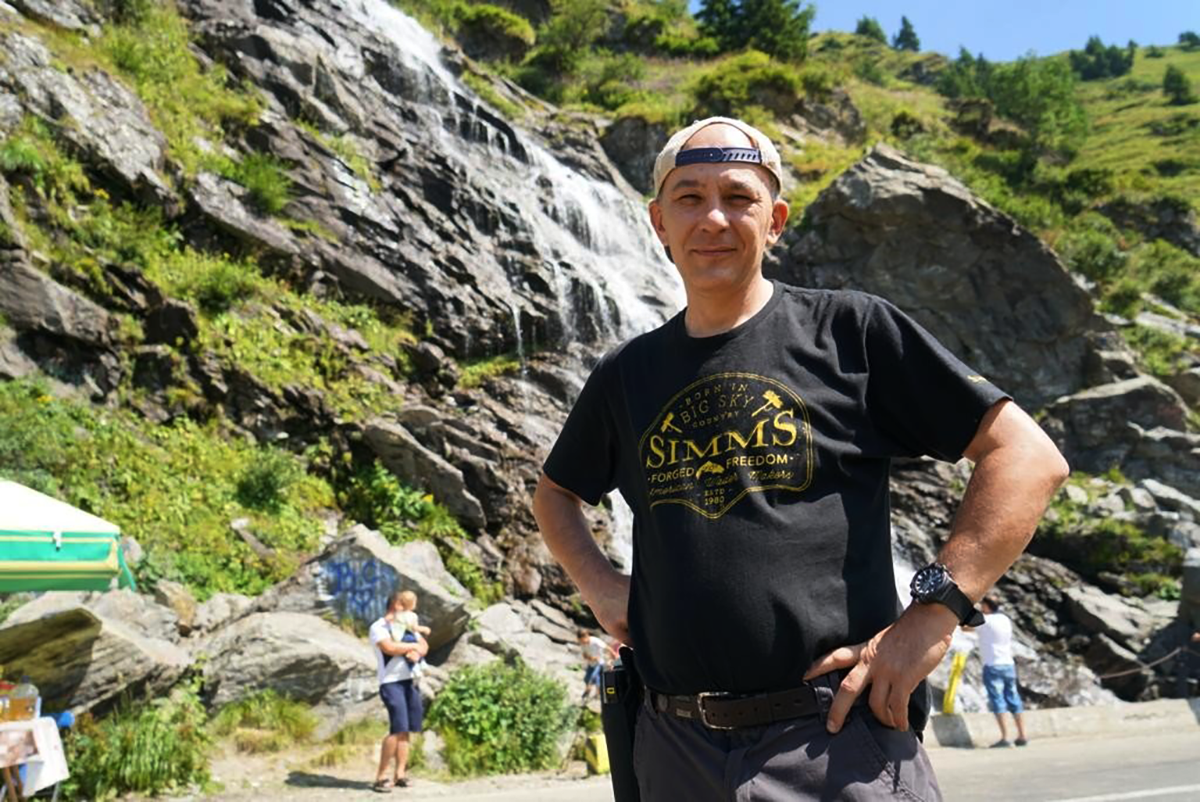
Ovidiu Mihut became an environmental activist after witnessing the impact of small hydropower project on a stream where he used to fish. Photo: Dina Ðorđević
After his initial reports to Romanian authorities fell on deaf ears, Mihut e-mailed the first of many complaints to the European Commission in March 2012. He also joined forces with other campaigners, demanding that the Romanian authorities halt the construction of small hydropower plants in unspoilt areas.
They succeeded in 2015, and the construction of small hydropower plants effectively ground to a halt when Romania withdrew subsidies for the sector. In 2016, the European Commission opened a so-called Infringement Procedure against Romania, investigating whether it had violated the EU’s environmental legislation.
The investigation has yet to be concluded but the gains made by the environmental activists have proved durable – for the time being. In September, the Romanian government passed a controversial law approving the construction of hydropower plants in conservation areas.
Environmentalists believe the legislation is aimed at expediting the completion of large state-owned hydropower projects, left unfinished because they contravened EU rules. They do not expect the new law to re-ignite the small hydropower boom, as it does not include any provision for subsidising the new plants. Diana Cosmoiu, policy co-ordinator at the World Wide Fund for Nature in Romania, told BIRN that campaigners’ efforts had ensured that “the latest version of the national energy strategy does not support small hydro developments”.
Experts told BIRN that EU environmental regulations tend to be more stringent for countries that are within the bloc, rather than those that are aspiring to join it. The Serbian government, for instance, has repeatedly been urged by the EU to abandon feed-in tariffs in favour of auctions, most recently in 2020, but Belgrade is still offering the subsidy.
For Nehro Rovcanin, the councillor from Gracanica, the campaign against small hydropower in his country has only shown how hard it is to hold the powerful to account. “An investor can stick a pipeline in a river but it is only us, the ordinary citizens, who are punished if we break the law,” he said.
First published on 15 December 2020 on Reportingdemocracy.org, a journalistic platform run by the Balkan Investigative Reporting Network.
This text is protected by copyright: © Dina Ðorđević / Reporting Democracy. If you are interested in republication, please contact the editorial team. Copyright information on pictures, graphics and videos are noted directly at the illustrations. Cover picture: Illustration: © Sanja Pantic / BIRN